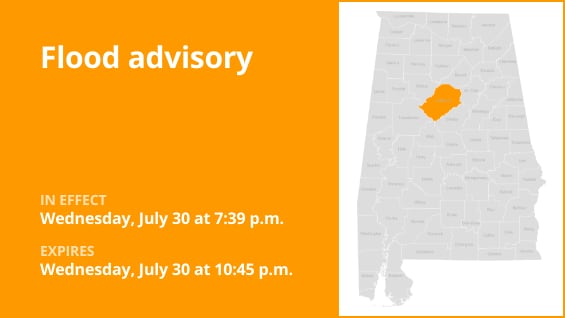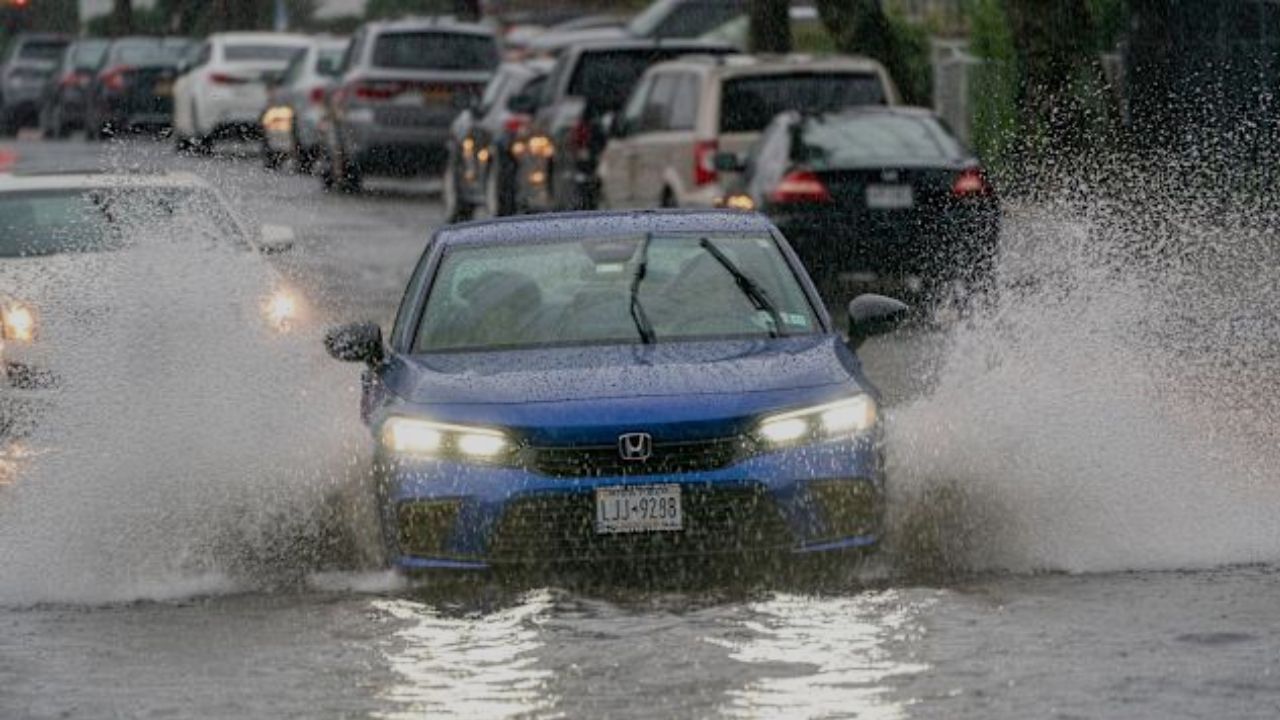On Wednesday at 7:39 p.m., the National Weather Service issued a flood alert for Jefferson County that would last until 10:45 p.m.
According to the weather service, “Urban and small stream flooding caused by excessive rainfall is expected.”
“Minor flooding in low-lying and poor drainage areas,” the weather service reports. “When you come across flooded roads, turn around to avoid drowning. The majority of flood fatalities involve automobiles.
Your guide to weather alerts: advisories, watches, and warnings
-
Flash flood warning: Take action!
When a flash flood is either approaching or has already occurred, a warning is given. Moving to higher ground right away is essential in places that are prone to flooding. A flash flood is a quick, intense flood that can form in a matter of minutes to hours and even occur in places that aren’t currently receiving any rain.
-
Flood warning: Take action!
When flooding is expected or is happening, a flood warning is issued.
-
Flood advisory: Be aware:
When flooding is not predicted to be severe enough to warrant a warning, a flood advisory is issued. But if care is not taken, it could result in circumstances that endanger life and/or property and cause a great deal of discomfort.
-
Flood watch: Be prepared:
When the weather is conducive to flooding, a flood watch is issued. Flooding is not guaranteed, but it is a possibility.
When floods strike: Guidelines from the weather service for your protection
Floods can be a serious hazard, particularly if you live in a flood-prone location or camp in a low-lying area. The weather service provides crucial flood protection instructions to protect you:
Look for higher ground.
Moving to higher ground should be your first course of action if you’re camping in a low-lying location or in an area that is prone to flooding.
Respect evacuation directives:
Immediately comply with any evacuation orders issued by local authorities. Make sure your house is locked before you leave.
Cut off appliances and utilities:
Disconnect your appliances and utilities if you have the time. By taking this precaution, electrical dangers during flooding are reduced.
Avoid drowned places and flooding basements:
Stay away from rooms with electrical outlets or cords that are submerged in water or basements. Electrical accident prevention is essential.
Quick evacuation to keep you safe:
Evacuate right away if you see sparks or hear popping, crackling, buzzing, or snapping sounds. Steer clear of any water that might be electrically charged.
Avoid the floodwaters:
Never try to cross flooding on foot. Six inches of quickly flowing water can knock you off your feet with force.
If you’re stuck, look for high ground:
If you find yourself caught by flowing water, get to the highest position you can and call 911 to get help.
floods is more likely during periods of high rainfall, particularly in areas that are low-lying and prone to floods. No matter how shallow the water looks, you should never drive through it. The weather service claims that most cars can be washed away by as little as 12 inches of swiftly moving water. Be knowledgeable and ready to stay safe.
Mastering wet roads: Safety tips for heavy rainfall
There is a greater chance of floods and dangerous roadways when it rains a lot. The weather service has provided the following advice to help you keep safe during downpours:
Watch out for flooding rivers:
When it rains a lot, stay clear from parking or strolling near culverts or drainage ditches since the swift-moving water could carry you away.
Keep your distances from other vehicles safe:
Keep a safe distance from the automobile ahead of you by following the two-second rule, and give yourself an extra two seconds if it’s raining a lot.
Reduce your speed and exercise caution:
Reduce your speed if it’s raining and the roads are wet. Reduce your speed gently by taking your foot off the accelerator. Never apply the brakes abruptly since this could cause the vehicle to slide.
Pick your lane carefully:
To reduce the chance of hydroplaning, stay in the middle lanes. Water is more likely to accumulate in outside lanes.
Put visibility first:
As rain-spattered windows make it more difficult to see other vehicles, turn on your headlights and pay attention to those in blind spots and behind you.
Be cautious on slick roads:
During the first half hour after the rain starts, exercise additional caution. The road becomes slick when water combines with dirt and oil on the surface.
Stay a safe distance away from big cars:
Avoid following buses or big vehicles too closely. Their big tires produce a mist that blurs your eyesight. Additionally, be cautious when passing them; if you have to, pass swiftly and securely.
Be mindful of your wipers:
-
Overloaded wiper blades can hinder visibility. If rain severely limits your sight, pull over and wait for conditions to improve. Seek refuge at rest areas or protected spots.
-
When stopping by the roadside is your only option, position your vehicle as far off the road as possible, ideally beyond guardrails. Keep your headlights on and activate emergency flashers to alert other drivers of your position.
You may greatly lower dangers and protect your health when it rains a lot by adhering to these safety precautions. To ensure a safe and sound voyage, keep yourself updated on weather conditions and follow local authorities’ instructions.
United Robots offers a service called Advance Local Weather Alerts that gathers the most recent information from the National Weather Service using machine learning.






